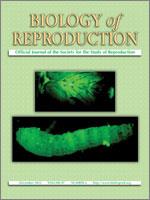Preeclampsia affects 5%–8% of pregnancies and is the leading worldwide cause of maternal and fetal morbidity and mortality. Preeclampsia is associated with shallow trophoblast invasion and inadequate spiral artery remodeling, which are widely believed to lead to placental hypoxia, the putative culprit initiating the cascade of events that ultimately results in the maternal manifestations of the disease. Despite extensive research, however, the pathophysiology of this disease remains poorly understood, no effective prevention exists, and treatment is limited to symptomatic therapy. Recent research has introduced exciting new theories regarding the pathogenesis of preeclampsia. Clinical and experimental evidence implicating the circulating antiangiogenic molecules soluble Fms-like tyrosine kinase-1 (sFLT-1) and soluble endoglin (sENG), as well as endothelin-1 and the angiotensin II receptor type I autoimmune antibody (AT-1AA), have been especially promising. This review collates evidence for a role of hypoxia and hypoxia-inducible factor-1alpha (HIF1A; referred to as HIF-1α throughout) in the pathogenesis of preeclampsia and discusses possible molecular links between hypoxia and the newly reported potential mediators of the disease's manifestations.
BioOne.org will be down briefly for maintenance on 17 December 2024 between 18:00-22:00 Pacific Time US. We apologize for any inconvenience.
How to translate text using browser tools
3 October 2012
The Role of Hypoxia and Hypoxia-Inducible Factor-1Alpha in Preeclampsia Pathogenesis
Reshef Tal
ACCESS THE FULL ARTICLE

Biology of Reproduction
Vol. 87 • No. 6
December 2012
Vol. 87 • No. 6
December 2012
angiogenesis
angiotensin II receptor type I autoimmune antibody
endothelin-,1 hypoxia
hypoxia-inducible factor-1 (HIF1A; HIF-1α)
preeclampsia
soluble endoglin
soluble Fms-like tyrosine kinase-1 (sFLT-1)




